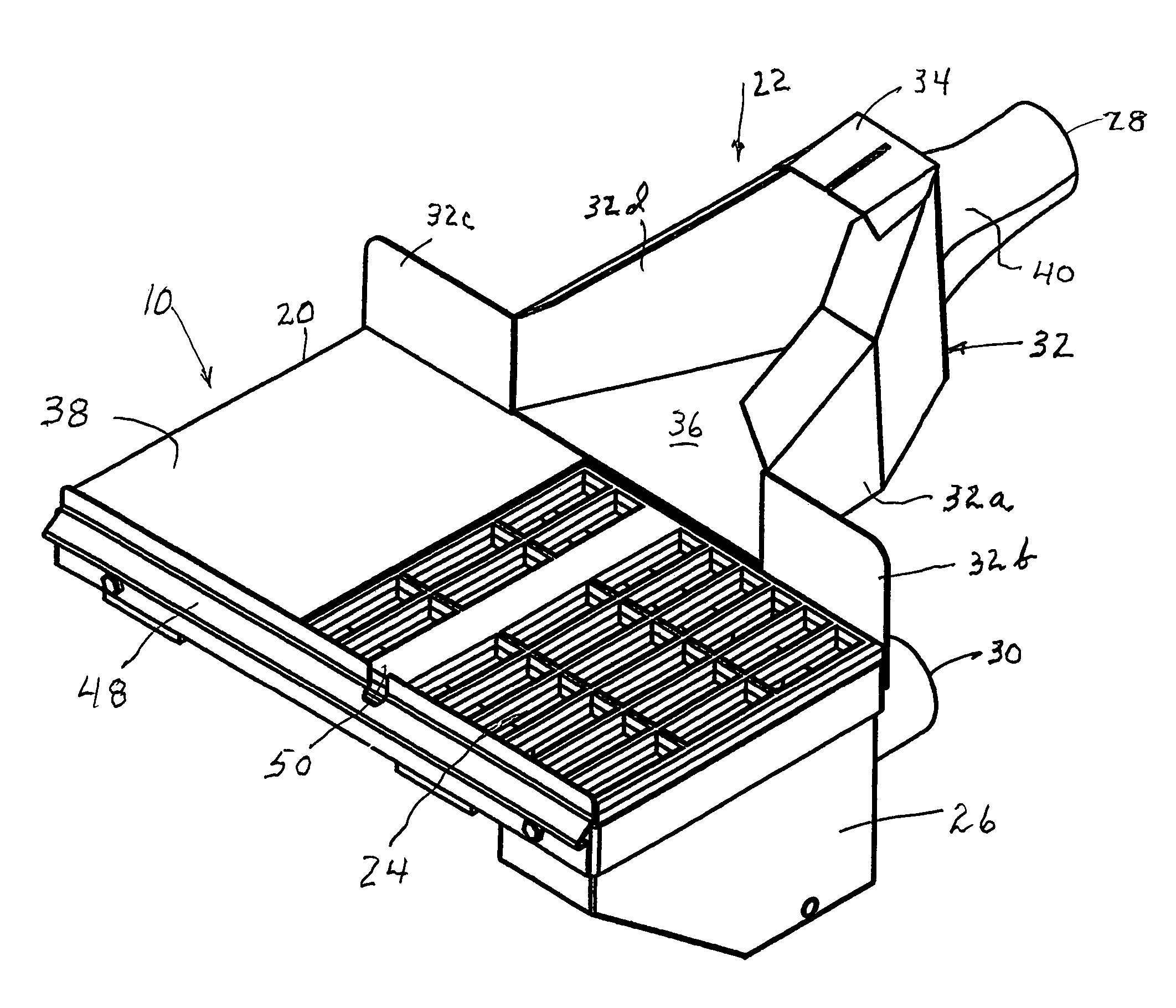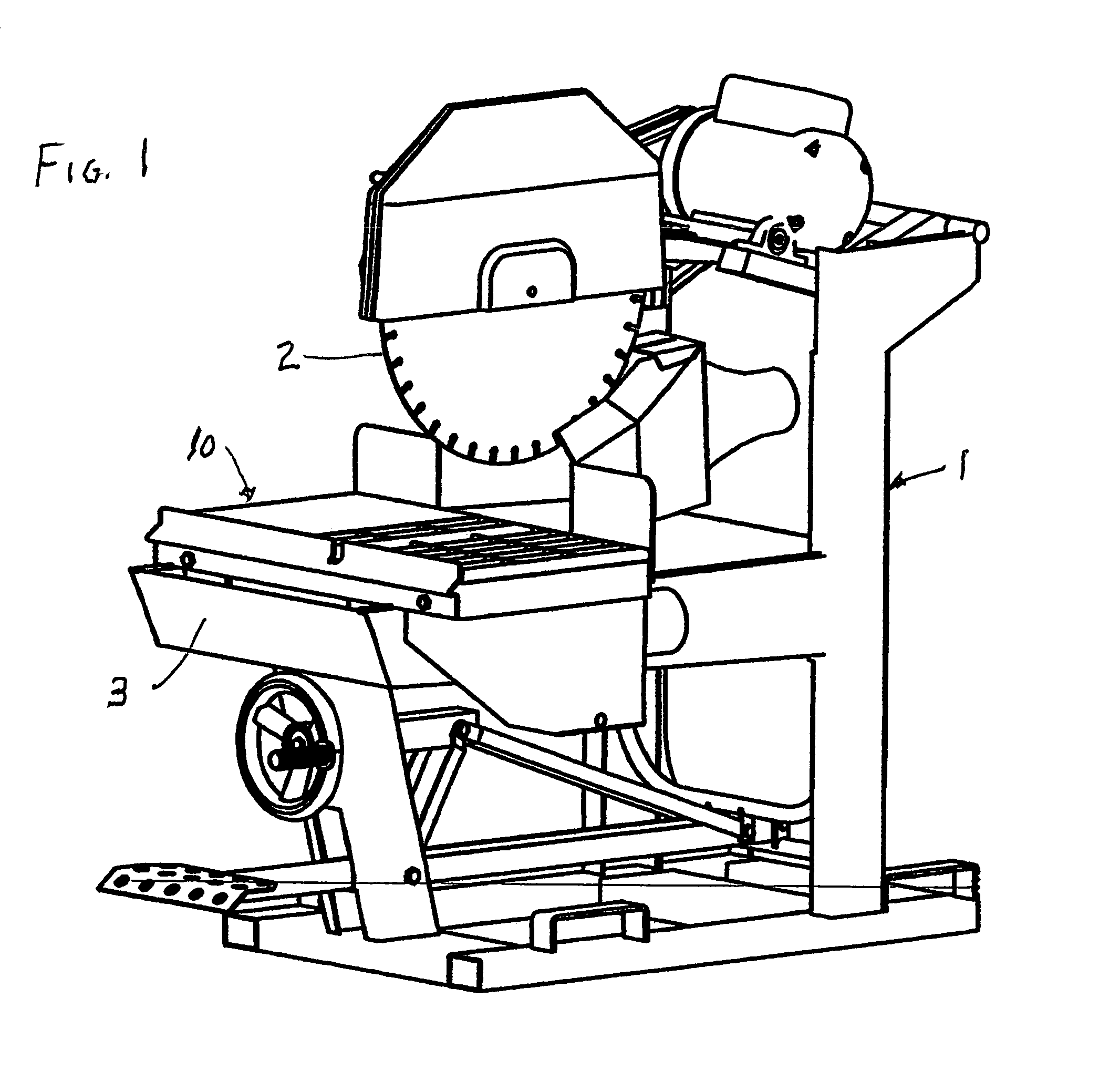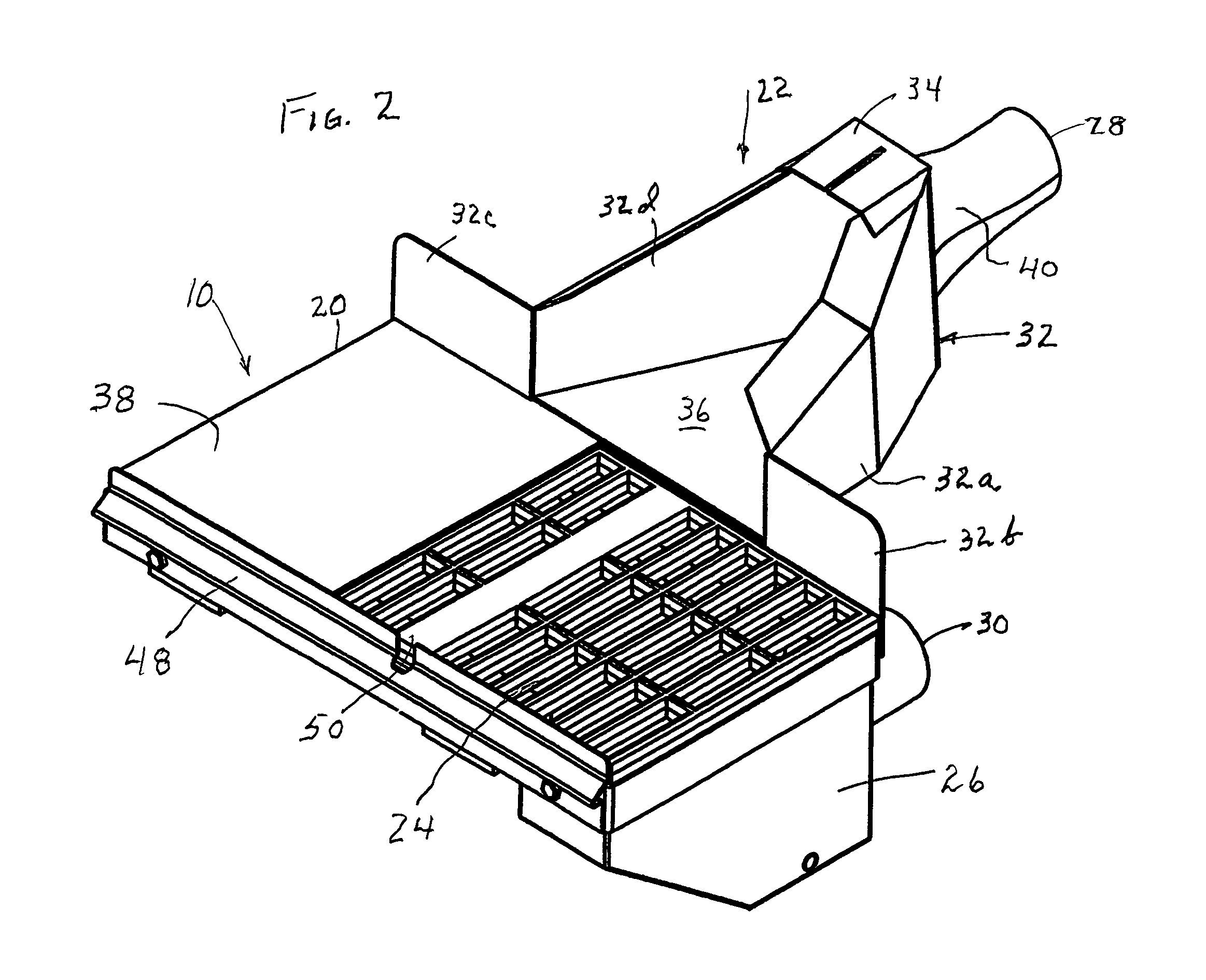Dust collection system for a masonry saw
a technology of dust collection system and masonry saw, which is applied in the field of masonry saw dust collection system, can solve the problems of polluting factor, exposed or finished product side of a cmu, requiring more labor and more water for cleaning, and achieve the effect of reducing the amount of dust particles
- Summary
- Abstract
- Description
- Claims
- Application Information
AI Technical Summary
Benefits of technology
Problems solved by technology
Method used
Image
Examples
Embodiment Construction
[0018]The following is a detailed description of one embodiment of the invention presently deemed by the inventor to be the best mode of carrying out his invention.
[0019]Referring to the drawings, particularly to FIG. 1, a conventional, commercially available masonry saw, indicated generally at 1, having a saw blade 2 and a supporting frame or tray 3 is shown as equipped with a preferred embodiment of the dust collection system 10 of the present invention.
[0020]Referring to FIG. 2, the dust collection system 10 comprises a movable masonry saw table 20, a vacuum shroud or hood assembly 22, a grated table surface24 and underlying vacuum chamber 52, a heavy debris collection chamber 26, a hood vacuum intake 28 and a table vacuum intake 30. The table 20 is slidably supported on the saw frame 3 for movement toward and away from the blade 2 by wheels 44 located at the four corners of the table, as is conventional in the art.
[0021]The hood or shroud assembly 22 includes rigid skirting 32 c...
PUM
| Property | Measurement | Unit |
|---|---|---|
| angle | aaaaa | aaaaa |
| angle | aaaaa | aaaaa |
| angle | aaaaa | aaaaa |
Abstract
Description
Claims
Application Information
 Login to View More
Login to View More - R&D
- Intellectual Property
- Life Sciences
- Materials
- Tech Scout
- Unparalleled Data Quality
- Higher Quality Content
- 60% Fewer Hallucinations
Browse by: Latest US Patents, China's latest patents, Technical Efficacy Thesaurus, Application Domain, Technology Topic, Popular Technical Reports.
© 2025 PatSnap. All rights reserved.Legal|Privacy policy|Modern Slavery Act Transparency Statement|Sitemap|About US| Contact US: help@patsnap.com



